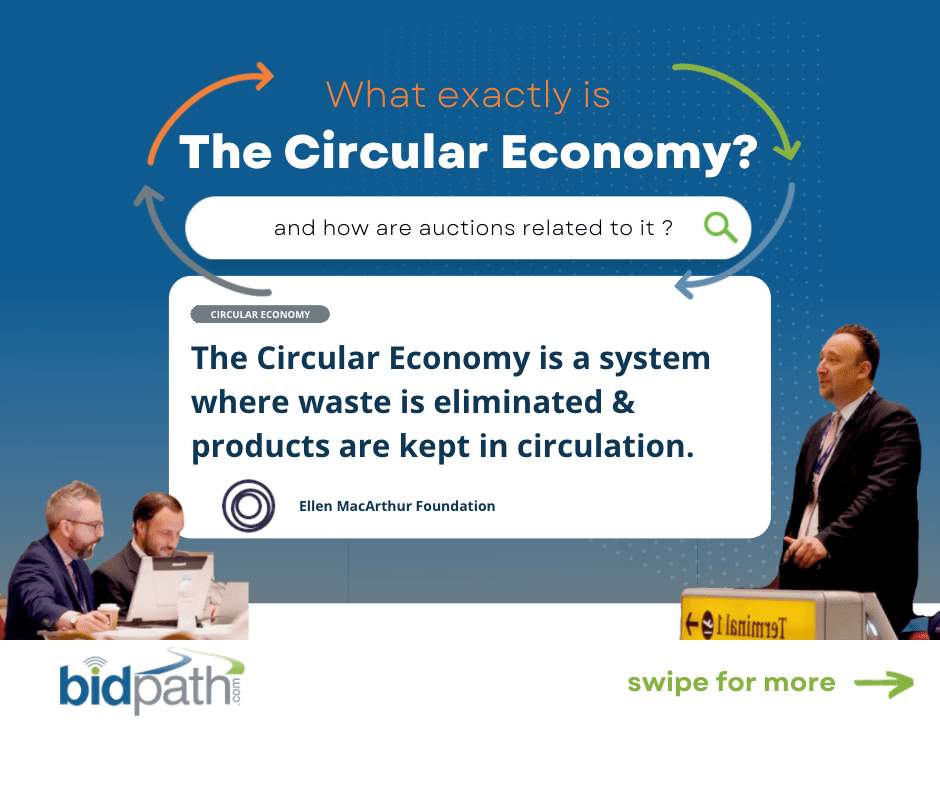
What is the Circular Economy?
As sustainability becomes an increasingly important consideration for businesses and consumers alike, we are here to help you to understand how your auction business impacts the industry and our ability to collectively make a difference. By nature, the auction industry embraces many principles of sustainability by operating within The Circular Economy.
The Circular Economy is a framework that eliminates waste and keeps products in circulation.
According to the Ellen MacArthur Foundation, “In our current economy, we take materials from the Earth, make products from them, and eventually throw them away as waste – the process is linear. In a circular economy, by contrast, we stop waste being produced in the first place.
The circular economy is based on three principles, driven by design:
It is underpinned by a transition to renewable energy and materials. A circular economy decouples economic activity from the consumption of finite resources. It is a resilient system that is good for business, people and the environment.”
So what do auctions have to do with it? Quite a lot actually.
When you look at the auction industry from a birds-eye view, you can see it effectively follows a fully circular model by nature.
Take a look at the graphic to the right to see what we mean…

Auction-Driven Circularity – The Auction Loop
In ‘traditional’ modes of consumption, an item will follow a linear life, also known as the ‘make-take-waste’ or ‘cradle to grave’ path. In ‘auction-driven consumption’, an item can face multiple, and in many cases, infinite life cycles along the four different loops that exist in the auction industry; we like to refer to these four loops as ‘The Auction Loop’, ‘The Repair Loop’, ‘The Upcycling Loop’ and ‘The Recycling/Remanufacturing Loop’. The closer the loop is to the center of the model, the more potential life cycles it can create within the system.
But why is this so important?
By understanding the ways in which auction models sit in the circular economy, auction companies of all sizes can evaluate both the impact their business has in eliminating linear waste, and the potential scope the industry has when circularity is truly embraced.
If you would like to learn more about the role auctions play in accelerating the Circular Economy, have a watch of the panel discussion and webinar we hosted as part of ReLondon’s 2022 Circular Economy Week alongside our guests from Sworders Fine Art Auctioneers and CA Global Partners.












